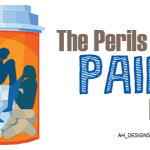 In a measure to encourage appropriate and rational prescribing, the U.S. Food and Drug Administration (FDA) has approved new safety measures for immediate-release (IR) opioids.1 The newly finalized Opioid Analgesic Risk Evaluation and Mitigation Strategy (REMS) will, for the first time, apply to IR opioid analgesics, which are intended for use in outpatient settings. This updated REMS also applies to the extended-release and long-acting (ER/LA) opioid analgesics, which have been subject to REMS since 2012.
In a measure to encourage appropriate and rational prescribing, the U.S. Food and Drug Administration (FDA) has approved new safety measures for immediate-release (IR) opioids.1 The newly finalized Opioid Analgesic Risk Evaluation and Mitigation Strategy (REMS) will, for the first time, apply to IR opioid analgesics, which are intended for use in outpatient settings. This updated REMS also applies to the extended-release and long-acting (ER/LA) opioid analgesics, which have been subject to REMS since 2012.
As part of this REMS program, healthcare providers who manage pain patients, including nurses and pharmacists, are required to receive training. The education is required to cover broader information about suitable pain management, including alternative, non-opioid pain treatments.
According to a statement from FDA Commissioner Scott Gottlieb, M.D., “Our new effort is aimed at arming providers with the most current and comprehensive information on the appropriate management of pain. … [This] action, importantly, subjects immediate release opioids—which are the most commonly prescribed opioid products—to a more stringent set of requirements. … Our aim is to make sure the medical community can take advantage of available education on pain management and [the] safe use of opioid analgesic products.”
In the statement, Dr. Gottlieb also notes the FDA’s efforts in advancing the development of evidence-based, indication-specific guidelines to help further guide appropriate prescribing of opioids, as well as reducing overall dispensing of opioids to further reduce patient exposure to them and prevent patients from becoming addicted.
Education & Labeling
The FDA has approved the new FDA Opioid Analgesic REMS Education Blueprint for Health Care Providers Involved in the Treatment and Monitoring of Patients with Pain (Blueprint). Continuing education and training under the modified REMS will be available to healthcare providers by March 2019. With these actions, the new Opioid Analgesic REMS will encompass 347 new opioids intended for outpatient use in addition to 62 ER/LA opioid analgesics already covered.
The FDA is also approving new safety label changes for all opioid products intended for use in an outpatient setting. The labeling will include information about the availability of education through REMS for prescribers and other healthcare providers involved in treating and monitoring pain patients.
Additionally, the new labeling includes information about REMS-compliant education in the Boxed Warning, Warnings and Precautions sections. It strongly encourages providers to complete a REMS-compliant education program; counsel patients and caregivers on the safe use, risks and appropriate storage and disposal of opioids; and to consider other tools to improve patient, household and community safety. For patients and caregivers, the labeling emphasizes the importance of reading the Medication Guide every time it is provided by a pharmacist.

